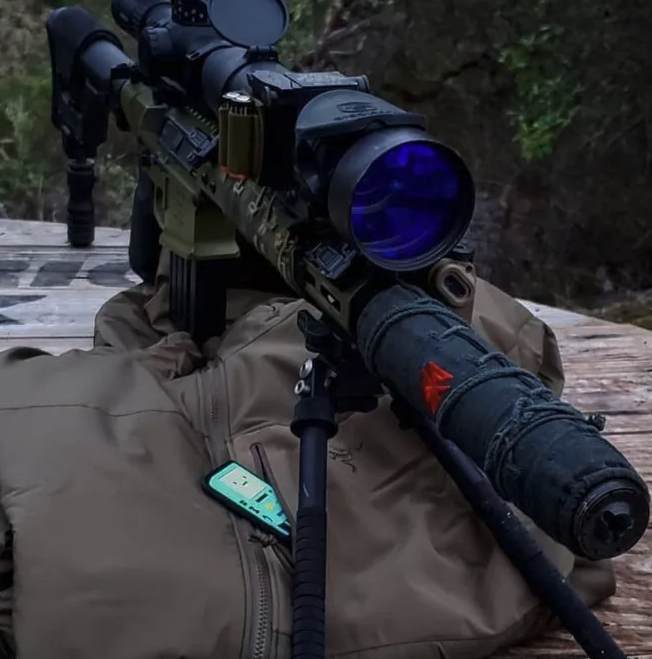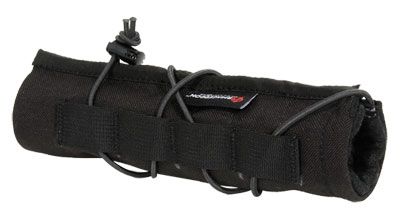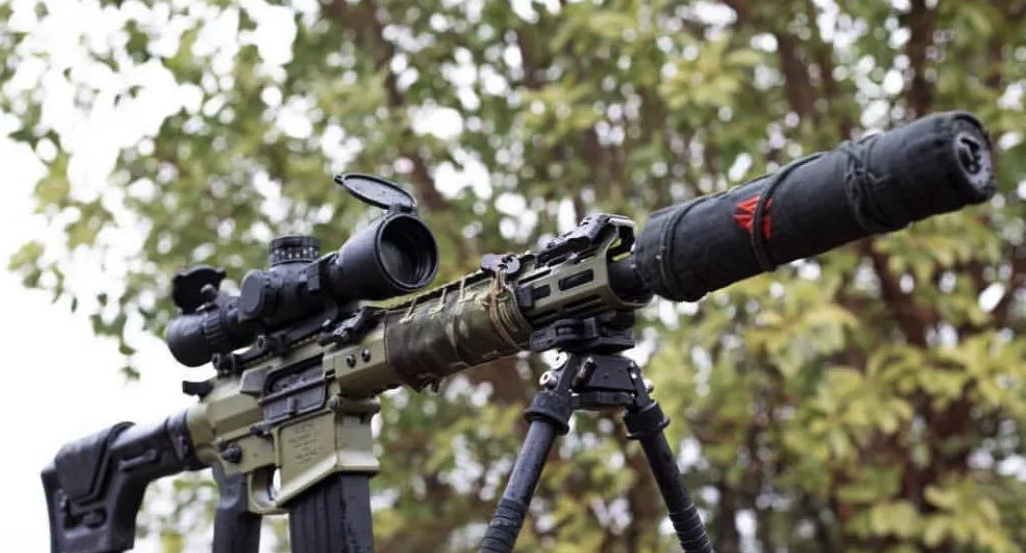AR-15 Accessories, NFA, Suppressors
Why Every Shooter Needs a Suppressor Cover
Table of contents
Suppressors are a game-changer for shooters, offering benefits like hearing protection, reduced flash, and improved shooting experiences in various scenarios. However, they come with a significant downside: heat. Suppressors can reach scorching temperatures, posing risks of burns, damage to gear, and optical distortion from heat mirage. This is where a cover steps in as a critical accessory for anyone using a suppressor, especially those moving around with their rifle. While not every shooter needs one, a suppressor cover can be a lifesaver for those navigating dynamic environments or engaging in specific shooting applications. In this guide, we’ll explore what suppressor covers are, their benefits, and why investing in a quality cover is essential for safety and performance.
Understanding the Role of a Suppressor Cover
A cover is a protective sleeve designed to fit over a firearm suppressor, mitigating the intense heat generated during shooting. Suppressors, also known as silencers, reduce noise, recoil, and muzzle flash, but they heat up rapidly—sometimes exceeding 700°F after sustained fire. This heat creates a thermal signature, poses burn risks, and can cause heat mirage, which distorts optics. A cover addresses these issues by insulating, reducing its thermal signature, and protecting the shooter and their gear.
Covers are typically made from heat-resistant materials like Kevlar, Nomex, or proprietary composites, designed to withstand extreme temperatures without melting or degrading. Unlike cheap nylon covers, which are better suited for Airsoft guns, high-quality covers are engineered to handle the real-world demands of live-fire scenarios, including tactical operations and long-range precision shooting.

The Benefits of Using a Suppressor Cover
Suppressor covers offer a range of advantages, making them a valuable addition for shooters who use suppressors regularly. Here’s why they’re worth considering:
Suppressor Cover Burn Protection for Safety
One of the primary reasons to use a cover is to prevent burns. After just 10 rounds, a suppressor can reach temperatures hot enough to cause burns, and after a single 30-round magazine, it can hit 200–300°F. For example, suppressors can gain approximately 7°F per shot, meaning after three 30-round magazines (90 rounds), the suppressor could reach 630°F plus ambient temperature—potentially 700°F or more. At these temperatures, accidental contact for even 3–5 seconds can result in severe third-degree burns, requiring immediate medical attention.
For shooters transitioning from rifle to pistol, stowing their firearm in a bag, or moving through tight spaces, an uncovered can poses a serious risk. A cover acts as a barrier, reducing the chance of burning yourself, your gear, or others nearby. This is especially critical in dynamic environments, such as close-quarters battle (CQB) training or tactical operations, where accidental contact with a hot suppressor could even cause a flinch, potentially leading to a negligent discharge.

Mirage Control for Better Accuracy
Heat mirage is a common issue for precision shooters using suppressors, particularly when paired with optics. As the it heats up, it emits a thermal signature that creates a shimmering effect, distorting the sight picture through a scope. This can make long-range shooting challenging, as the mirage obscures the target. Suppressor covers, often referred to as mirage covers, mitigate this by insulating the suppressor and reducing the heat waves that cause distortion. This is especially beneficial for long-range precision shooters or those using thermal optics, where clarity is paramount.
Enhanced Night Vision Compatibility
For shooters using night vision or thermal optics, suppressors are essential to reduce muzzle flash, which can overwhelm or even damage sensitive equipment. Without one, the bright flash from a rifle makes night vision nearly unusable, rendering it impractical for low-light operations. However, a hot suppressor still emits a thermal signature that can interfere with thermal optics or be detected in tactical scenarios. A suppressor cover helps minimize this thermal/IR signature, making it easier to shoot accurately in low-light conditions while maintaining a low profile.
Protection for Gear and Surroundings
Hot suppressors can damage gear, such as bags, clothing, or vehicle interiors, when stowed after shooting. A suppressor cover prevents this by containing the heat and protecting your equipment. This is particularly important for operators who need to quickly transition from shooting to stowing their firearm without worrying about melting or burning their gear.

Choosing the Right Suppressor Cover
Selecting a suppressor cover requires careful consideration to ensure it meets your needs and withstands the demands of your shooting style. Here’s what to keep in mind:
Material Matters
Quality covers are made from heat-resistant materials like Kevlar, Nomex, or specialized composites. Avoid cheap nylon covers, as they can melt under high temperatures and are better suited for non-firearm applications like Airsoft. A well-made cover should withstand the heat of sustained fire, though you should avoid constant mag dumps to prolong its lifespan. Reputable brands like Burn Proof Gear, Thunder Beast, Armageddon Gear, and Manta Defense use high-quality materials designed for real-world use.
Proper Fit and Installation
A cover should fit snugly to prevent sliding or slipping during use. Ideally, it should be about a half-inch longer than the suppressor, including the quick-detach portion, and cinch tightly at the front and back by about a quarter-inch. When properly installed, you should be able to hold the rifle by the suppressor and shake it without the cover coming off. This “set it and forget it” design is critical for tactical operators or hunters who need reliability in demanding conditions.
Research Before You Buy
The market is flooded with covers, from high-end models to cheap imports from China. Low-quality covers may melt, fail to stay secure, or provide inadequate heat protection. As with many firearm accessories, the adage “buy once, cry once” applies. Research trusted brands and read reviews to ensure you’re getting a cover that’s engineered for performance. Check out products from Burn Proof Gear (available at burnproofgear.com) or Thunder Beast (available at ar15discounts.com) for reliable options.
Addressing Common Concerns About Covers
Noise Reduction Misconceptions
Suppressor covers do not reduce the noise of a suppressor. Their primary function is to manage heat, reduce thermal signatures, and prevent burns or damage. The noise reduction comes entirely from the suppressor itself, which is designed to muffle sound by trapping and dissipating gases.
Rapid-Fire and Full-Auto Compatibility
High-quality covers are designed to withstand the heat generated during rapid-fire or even full-auto shooting, but they have limits. Constant mag dumps can push a cover beyond its thermal capacity, causing wear or damage over time. For most shooters, a well-made cover should handle slow to moderate fire (e.g., a couple of magazines) without issue. Always check the manufacturer’s specifications to ensure compatibility with your shooting style.
Overheating Concerns
A properly designed suppressor cover should not cause the suppressor to overheat. While it insulates, it’s engineered to allow enough heat dissipation to prevent damage to the suppressor or cover. However, prolonged rapid fire can stress both the suppressor and cover, so use caution and follow manufacturer guidelines.
Why Not Everyone Needs a Suppressor Cover
While covers offer significant benefits, they’re not necessary for every shooter. If you’re primarily shooting at a static range with minimal movement, the risk of burns or gear damage is lower, and a cover may not be essential. However, for those engaging in dynamic shooting scenarios—such as CQB, tactical training, or hunting with frequent transitions—a cover is a smart investment. It’s particularly valuable for shooters using night vision, thermal optics, or long-range setups where heat mirage is a concern.
Conclusion
A cover is more than just an accessory—it’s a critical tool for managing the heat, safety, and performance challenges that come with using a suppressor. From preventing burns during transitions to reducing heat mirage for clearer optics, a quality cover enhances your shooting experience, especially in dynamic or tactical scenarios. While not every shooter needs one, those moving around with a suppressed rifle—whether for CQB, night vision shooting, or long-range precision—will find a suppressor cover invaluable. Invest in a high-quality cover from trusted brands like Burn Proof Gear, Thunder Beast, or Manta Defense, and avoid cheap alternatives that may melt or fail when you need them most. Do your research, choose wisely, and enjoy the benefits of safer, more effective shooting.
FAQS
A suppressor cover is a heat-resistant sleeve that fits over a firearm suppressor. It helps manage heat, prevent burns, reduce thermal signatures, and limit optical distortion caused by heat mirage.
Suppressor covers protect you and your gear from burns, reduce heat mirage that affects optics, and minimize thermal signatures for night vision or tactical use. They also prevent hot suppressors from damaging bags or equipment when stowed.
No. A suppressor cover does not reduce noise. Noise reduction comes entirely from the suppressor itself. The cover only manages heat and protects against burns and mirage.
High-quality suppressor covers are typically made from heat-resistant materials such as Kevlar, Nomex, fiberglass, or proprietary composites designed to withstand extreme temperatures.
Yes. By insulating, covers reduce the heat waves that rise from a hot suppressor and distort the view through a scope or optic, improving accuracy and visibility.
A properly designed cover will not cause harmful overheating. It slows heat transfer but still allows safe dissipation under normal use. Prolonged rapid-fire or repeated mag dumps, however, can stress both the suppressor and cover.
Select a cover made from heat-rated materials and sized to fit snugly over your suppressor without slipping. It should ideally extend slightly past the suppressor body and cinch tightly at both ends.
Most high-quality suppressor covers are rated for rapid or full-auto fire, but they have limits. Continuous mag dumps or extreme firing sessions can exceed their thermal capacity and shorten their lifespan. Always check the manufacturer’s specifications.

